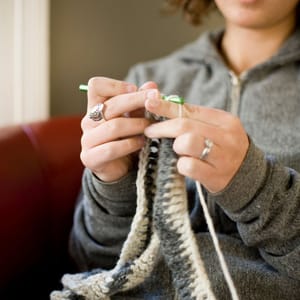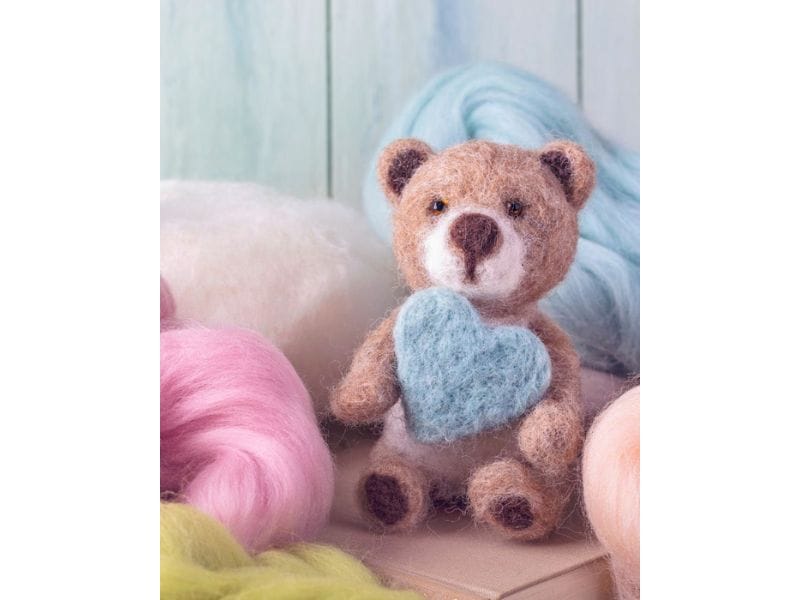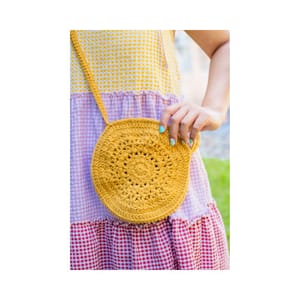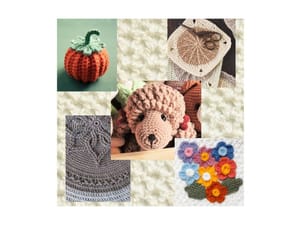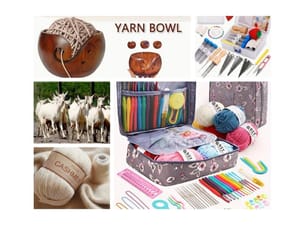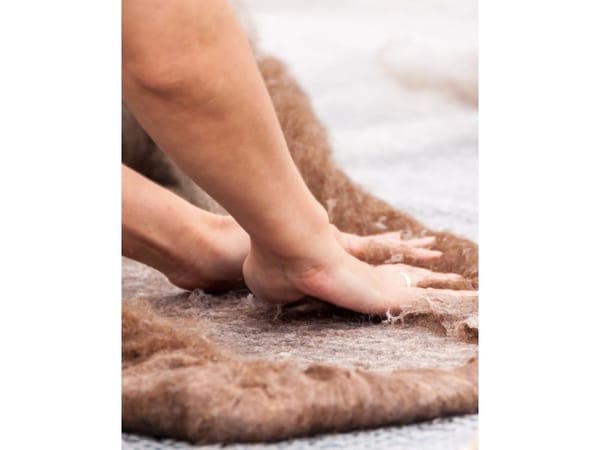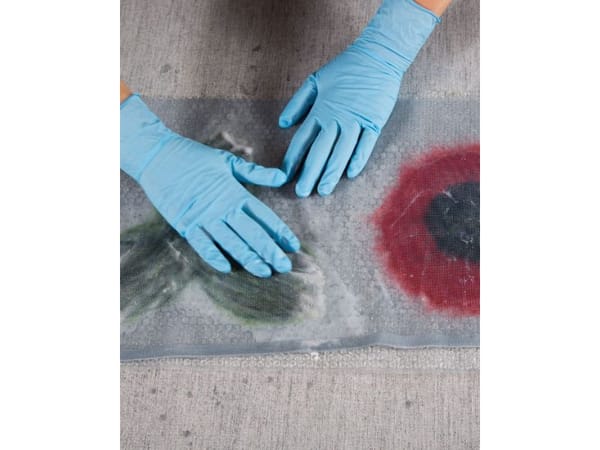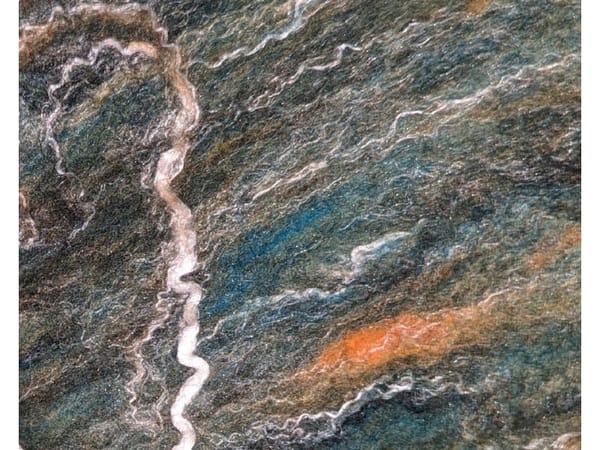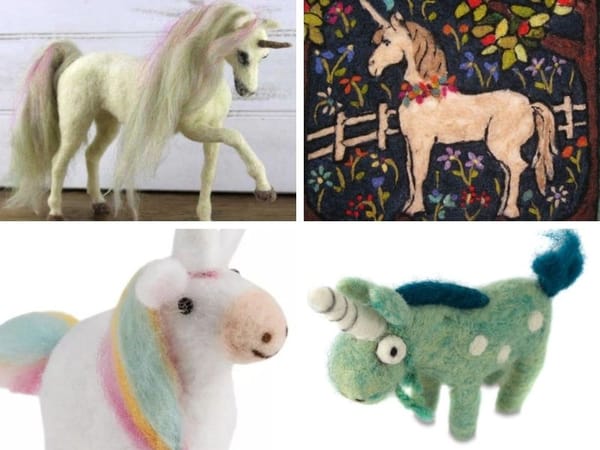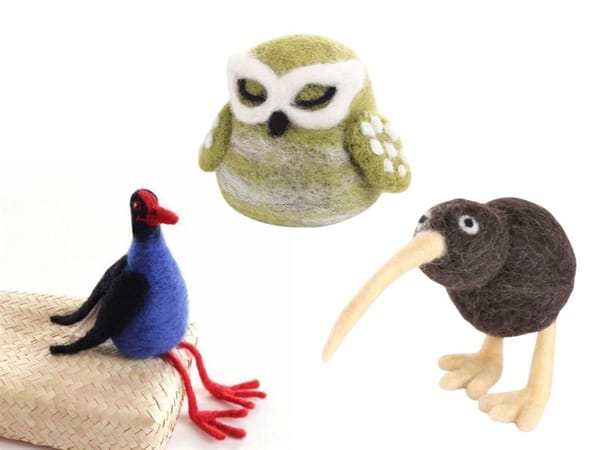Needle felting is a unique form of craft that has gained popularity due to its versatility and the charming results it can produce.
But for many beginners, the question remains: is needle felting difficult?
This article explores the intricacies of needle felting, offering insights into the tools, techniques, and tips needed to embark on a successful needle felting creative journey.
So, if you're here because you're curious about this craft and thinking of trying needle felting, keep reading.
Like myself, you may have seen a needle felted creation and were inspired to try it. For me, it all started with Christmas ornaments thinking to myself, "I think I can make this!" And so, my needle felting obsession with this new craft (to me) began.
Key Takeaways:
- Accessibility: Needle felting is accessible to beginners, with various starter kits and tutorials available.
- Skill Progression: While starting with basic shapes is easy, advancing to more complex designs requires practice and patience.
- Creative Satisfaction: Despite its challenges, needle felting offers immense creative satisfaction and therapeutic benefits.
Understanding Needle Felting
Needle felting is a process that involves using sharp, barbed needles to interlock wool fibers into a dense, felted fabric.
Unlike traditional felting, which uses water and agitation, needle felting is dry and typically involves sculpting wool into three-dimensional shapes.

The Basic Tools Required
To start needle felting, you need a few basic tools:
- Felting needles: Felting needles are special needles with barbs that catch the wool fibers.
- Wool roving: This is unspun wool that is easy to shape.
- Felting mat: A surface to work on that protects your needles and your table.
Is Needle Felting Easy for Beginners?
For those new to the craft, the needle felting process can seem daunting.
However, many find that starting with simple projects like creating basic shapes or cute animals can be quite straightforward.
Needle felting kits available at craft stores often come with all the materials and step-by-step instructions to help beginners.

The Role of Starter Kits
Starter kits are a boon for beginners.
They typically include felting needles, core wool, colored roving, and often detailed video tutorials.
These kits allow new crafters to get a feel for the materials and techniques without a large upfront investment.
Step by Step Needle Felt Instructions: A Beginner’s Best Friend
Following step-by-step instructions, whether from a book or a video tutorial, can dramatically simplify the needle felt learning process.
These resources guide you through the entire project, from how to handle a felting needle to achieving the desired shape.

The Challenge of More Complex Designs
As you move beyond basic shapes, the complexity of projects increases.
Creating detailed figures or intricate patterns requires not only creativity but also precision and patience.
This is where many beginners might find needle felting hard.
Practice Makes Perfect
Like any art form, proficiency in needle felting comes with practice.
Experienced needle felters suggest that the key to mastering this craft is persistence. The more you felt, the better you understand how to manipulate the fibers to achieve finer detail.
Exploring Different Felting Techniques
When embarking on your needle felting journey, it's exciting to explore various techniques that can enhance your creations.
One popular method involves...
... using a cookie cutter as a form to shape your wool.

This technique simplifies the process, especially for beginners, by providing a solid boundary that guides the felting needle, ensuring that the wool takes on a specific shape.
It's a fantastic way to create uniform shapes like hearts, stars, or animal figures without freehand sculpting, which can be more challenging.
Another intriguing technique is...
... the incorporation of other materials such as pipe cleaners.

Pipe cleaners can be used to create flexible skeletons for needle felted animals or figures, allowing for adjustable limbs and enhanced posture.
This addition not only brings your felted creations to life but also introduces a new layer of creativity and functionality. By integrating pipe cleaners, crafters can achieve more dynamic and animated characters, adding a playful element to the whole process.

Incorporating Sewing Techniques in Needle Felting
Needle felting can be an isolated craft, but incorporating techniques from other crafts like sewing can elevate your projects to new heights.
By using simple sewing methods, you can add embellishments or join pieces in ways that felting alone might not allow.
For instance, sewing tiny beads onto your felted figures can bring a sparkle to their eyes, making them appear more lifelike. This integration not only enhances the visual appeal but also adds to the structural integrity of larger pieces, ensuring they last longer and withstand handling better.
Moreover, understanding basic sewing can help repair any accidental stabs or pokes that might occur during the needle felting process.
If the body of a felted creature becomes loose or starts to separate, a few discreet stitches can salvage the piece without starting over.
This skill is particularly useful in projects involving thinner or more delicate wools, where the felting needle alone might not provide sufficient binding. Embracing sewing as part of your needle felting toolkit opens up a broader range of creative possibilities and helps avoid the common mistake of discarding slightly damaged needle felted projects.
Creative Journey in Needle Felting
Embarking on a creative journey with needle felting offers a unique opportunity to explore an array of fibers and techniques.
While many beginners start with sheep's wool, which is forgiving and easy to handle, experimenting with other wools like alpaca or merino can be a delightful challenge.

Each type of wool reacts differently under the felting needle, offering varying textures and firmness. This exploration not only broadens your skillset but also enhances your understanding of how different materials contribute to the final look and feel of your projects.
Happy felting isn't just about following a needle felting tutorial step by step; it's about making each piece a reflection of your personal style and preferences.
As you grow more comfortable with the basics, try blending different colors or types of wool in the same project to see unique results.
Remember, every piece doesn't have to be perfect.
Needle felting, like any new craft, is a journey of learning and discovery. Embrace the imperfections and unexpected outcomes as essential parts of your artistic exploration.
Enhancing Details in Needle Felted Projects
Detailing in needle felting can transform a simple project into a stunning piece of art.
The key to adding fine details is...
... patience and precision with your felting needle.

For instance, when creating animal figures, small pokes with the needle can help define features like eyes, ears, and whiskers, making the animal appear more lifelike.
This technique requires a gentle touch to avoid over-felting, which can blur the details and alter the intended expression of the felted figure.
Another way to enhance details...
... is through color mixing and layering.
By carefully blending different shades of wool, you can achieve gradients and shadows that add depth and realism to your projects.
This method is particularly effective in projects like landscapes or portraits where subtle color transitions can make a significant impact.
Remember, the beauty of needle felting lies in the details, and mastering these techniques can elevate your craft to new heights, making each piece uniquely captivating.
Common Needle Felt Mistakes to Avoid
New needle felters often make a few common mistakes:
- Poking the needle too deep: This can break the felting needle or cause large, unsightly holes in the felt.
- Not using enough wool: Underestimating the amount of shrinkage during the needle felt process can result in sizes smaller than intended.
Tips for Successful Needle Felting
Here are some needle felting tips to help you avoid common pitfalls:
- Start small: Begin with simple projects to build confidence.
- Use the right needles: Different sizes and types of needles are suited for different aspects of the needle felt process.
- Use Finger Guards: Protect your fingers and your piece by using finger guards (usually included in needle felting kits).
- YouTube: Watch a needle felting tutorial to get an understanding of how to shape the wool before you start.

The Therapeutic Benefits of Needle Felting
Many find needle felting process to be more than just a craft.
The repetitive action of stabbing the wool can be meditative and therapeutic, offering a form of creative expression that relaxes the mind.
Joining a Community of Crafters
Engaging with a community of fellow needle felters can enhance your learning experience.
Online forums, social media groups, and local craft clubs can provide support, inspiration, and valuable feedback on your felting projects.
Expanding Your Skills
As you grow more comfortable with the basics, you might want to explore advanced techniques such as using armatures for creating posable figures or incorporating other materials like beads or fabric into your felting projects.
Resources for Continued Learning
There are numerous resources available for those looking to deepen their needle felting knowledge:
- Books: Comprehensive guides and specialized books provide in-depth techniques and project ideas.
- Online Courses: Many experienced felters offer online classes that range from beginner to advanced levels.
Is Needle Felting Time Consuming?
The time it takes to complete a needle felting project varies widely depending on the complexity of the design.
While small projects can be completed in a few hours, larger, more detailed works might take several days.

Q1: How long does it take to learn needle felting?
A1: Learning the basics of needle felting can be quick, often taking just a few hours to understand the fundamental techniques. However, mastering more advanced skills can take much longer, depending on the complexity of the projects and the amount of practice.
Q2: Can children try needle felting?
A2: Yes, children can enjoy needle felting, but due to the sharpness of the needles, it is recommended for older children under adult supervision. It's a great way for them to develop fine motor skills and creativity.
Q3: Where can I find needle felting supplies?
A3: Needle felting supplies are widely available at craft stores, online marketplaces, and specialty shops that focus on felting and wool crafts. Starter kits are highly recommended for those just beginning their needle felting journey.
Wrapping Up
For beginners, it’s an accessible craft that requires minimal investment in tools and materials.
Needle felting can be as simple or as challenging as you make it.
As skills and confidence grow, needle felters can tackle more complex and time-consuming projects.
Regardless of the difficulty, the satisfaction of creating something by hand makes needle felting a rewarding endeavor.
Note: I have been needle felting for about 10 years. I have needle felted several Christmas ornaments for my tree. Several are needle felted snow-women in funny poses and shapes. Starting with a snowman (or snow-woman) is a simple needle felting project.
Happy Felting!


Images Source: Canva

